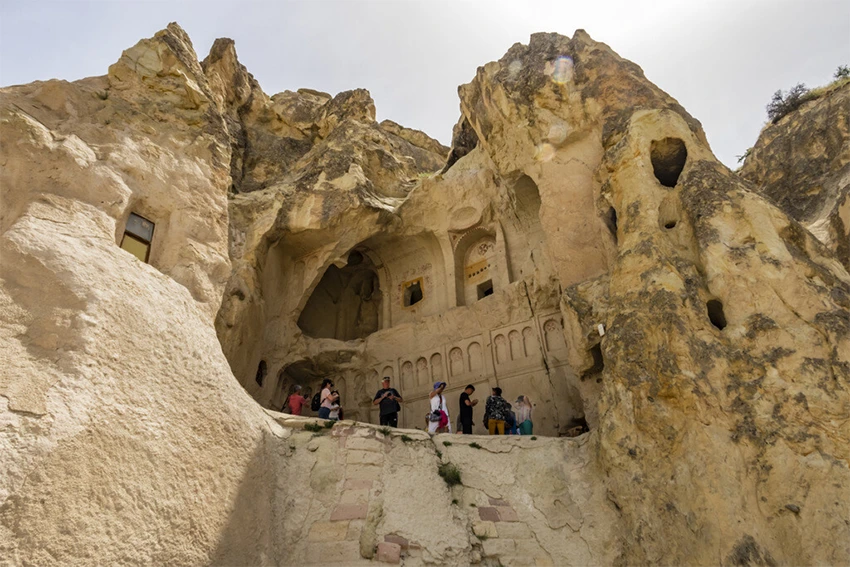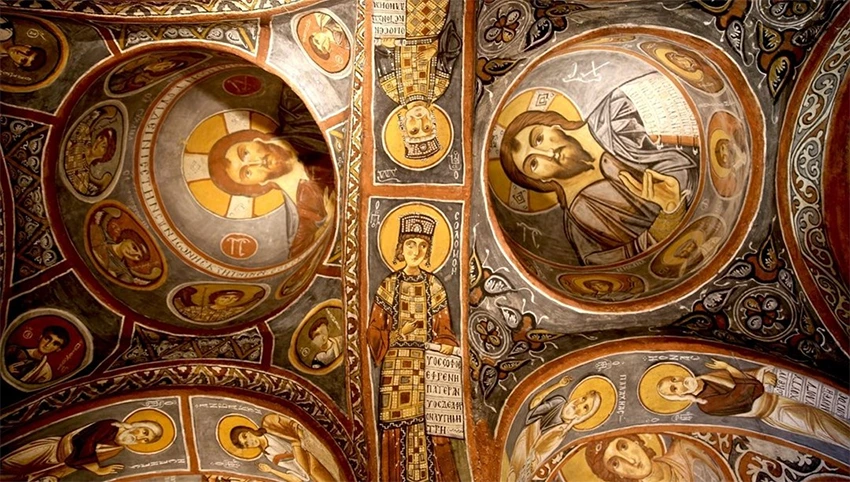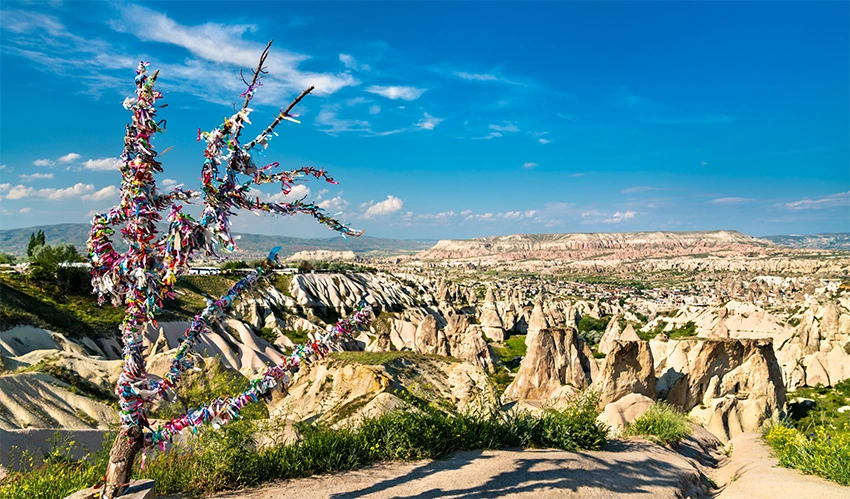Göreme Open-Air Museum
Göreme Open-Air Museum
A Sacred Valley of Rock-Cut Faith and Art
The Göreme Open-Air Museum is one of Cappadocia’s most significant cultural heritage sites. Carved into the region’s soft volcanic tuff, its chapels, churches, dining halls, and monastic dwellings reflect a vibrant religious life that flourished between the 4th and 13th centuries. Most of the structures were built during the Byzantine period and together form a vast complex that is recognized as one of the earliest centers of monastic education.

Famous for its extraordinary architecture and vividly colored frescoes, the Göreme Open-Air Museum has been a UNESCO World Heritage Site since 1985.
History & Architecture
The rock formations of the Göreme Valley have been carefully hollowed out to create chapels, churches, and communal living spaces. Some of the most important early Christian structures in the region are found here, including:
- Chapel of Saint Basil (Aziz Basileus)
- Tokalı Church (Buckle Church)
- Karanlık Church (Dark Church)
- Elmalı Church (Apple Church)
- Yılanlı Church (Snake Church)

The frescoes inside the churches are especially notable. Early examples feature geometric motifs, reflecting the iconoclastic periods of early Christianity. Later frescoes rich in color and detail depict scenes from the life of Jesus and stories from the Bible, and many have survived in remarkable condition.
The museum’s vast cave complex served not only as a religious sanctuary, but also as a center for spiritual instruction and communal life, making it a cornerstone of Cappadocian monastic tradition.
Visitor Information & Tips

- Location & Access:
Located just outside Göreme town, about 13 km from Nevşehir city center. Reachable by minibus or tour. A parking lot is available. - Opening Hours:
April–October: 08:00–20:00 / November–March: 09:00–17:00
(Seasonal changes possible check before visiting.) - Admission Fees & Museum Pass:
As of 2025, entrance for international visitors is around €20. Turkish citizens can use the Museum Pass. - Recommendations:
- Wear sturdy walking shoes paths are rocky and uneven.
- Avoid large bags.
- Visit early morning or late afternoon to avoid heat.
- Golden hour offers ideal light for photography.
- Bring water refreshment facilities are limited.
Where History Meets Nature

Nestled in a valley surrounded by fairy chimneys, the Göreme Open-Air Museum offers a rare blend of art, spirituality, and landscape. A visit here allows you to explore early Christian architecture and sacred art while standing in one of nature’s most surreal amphitheaters.



